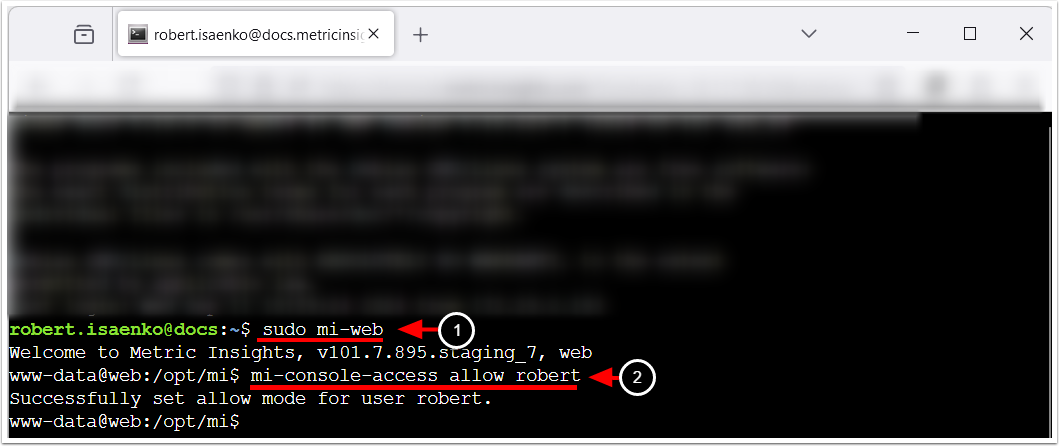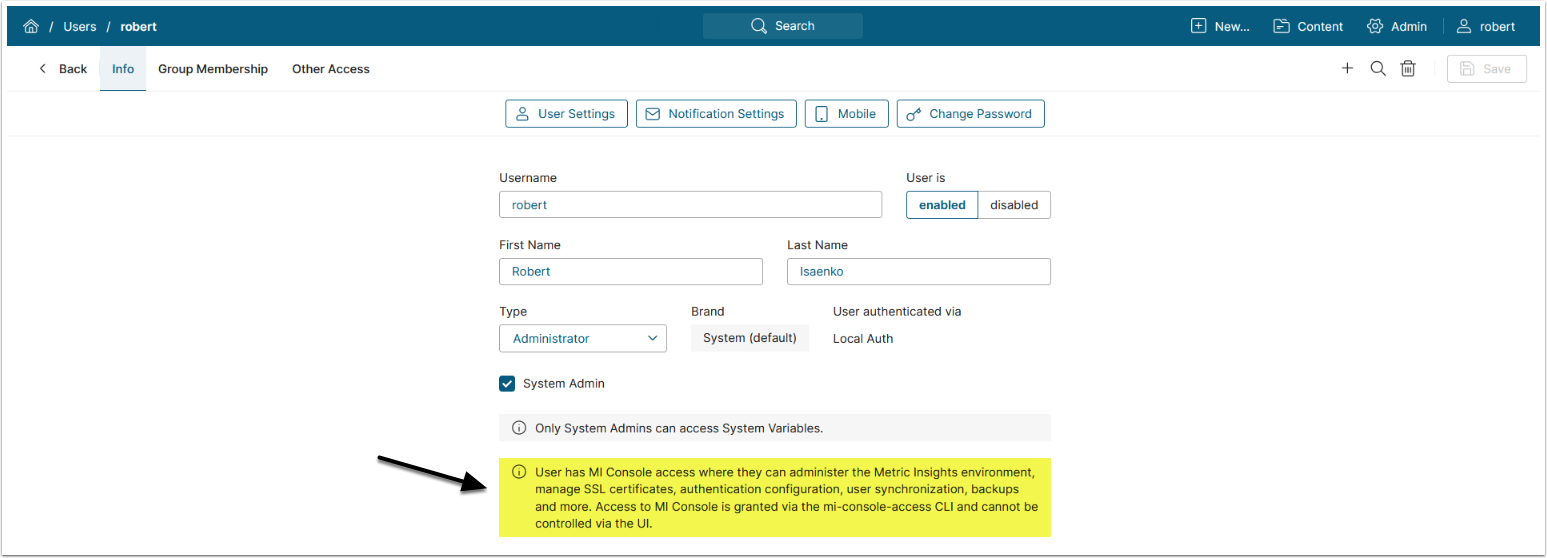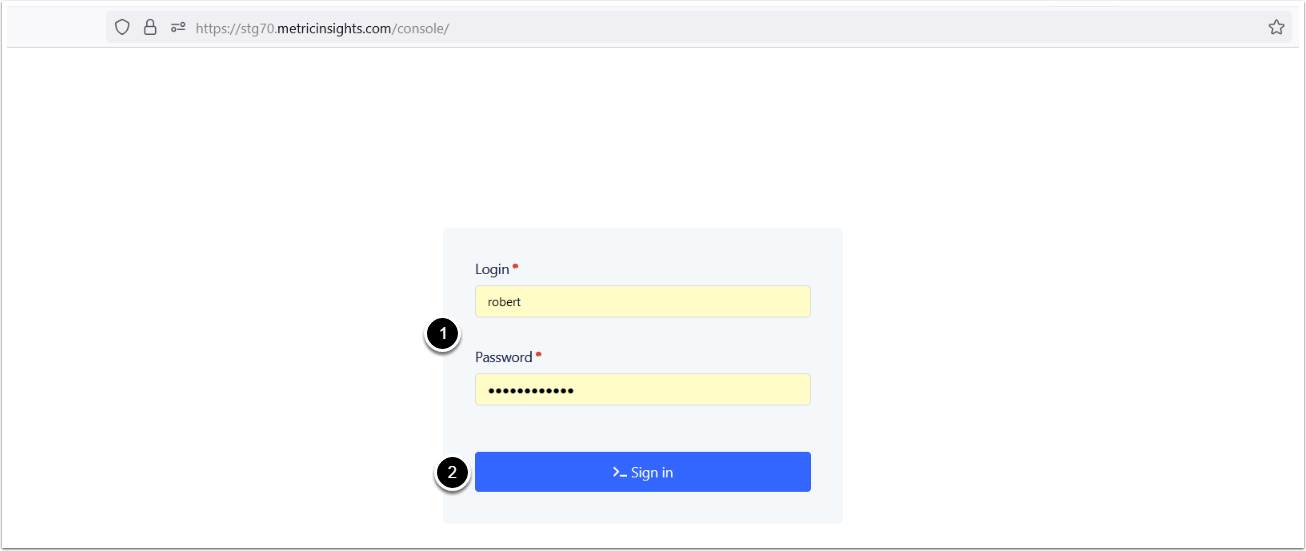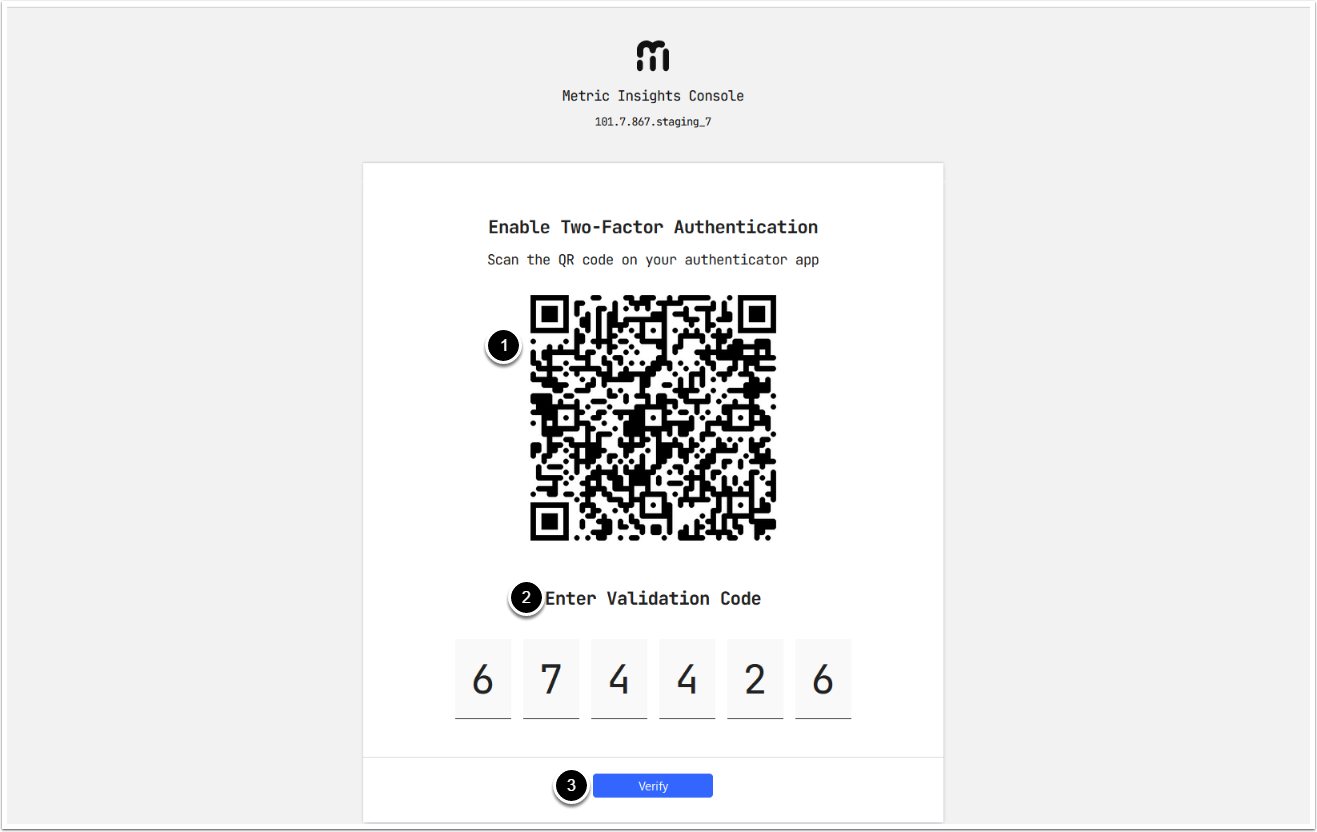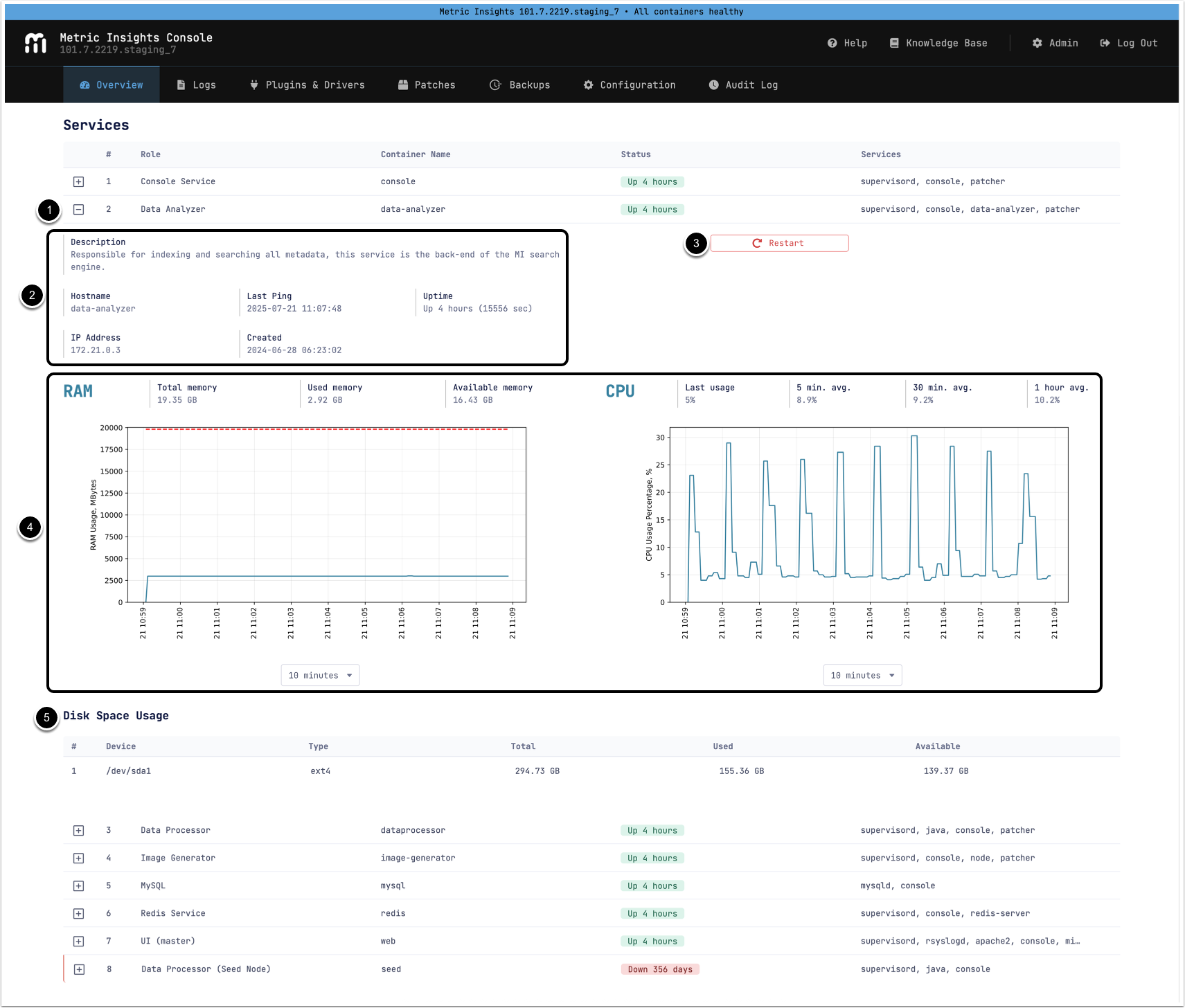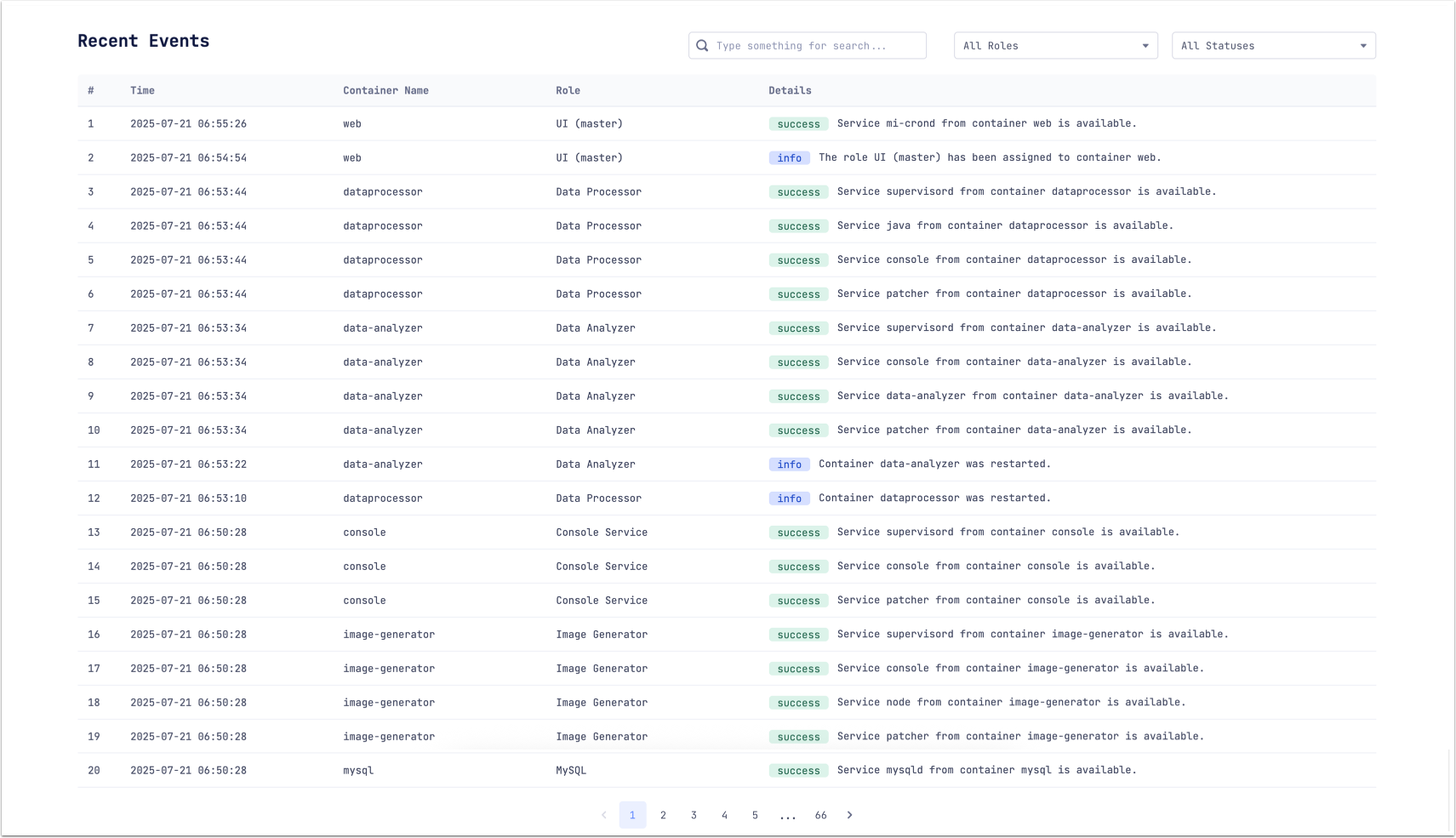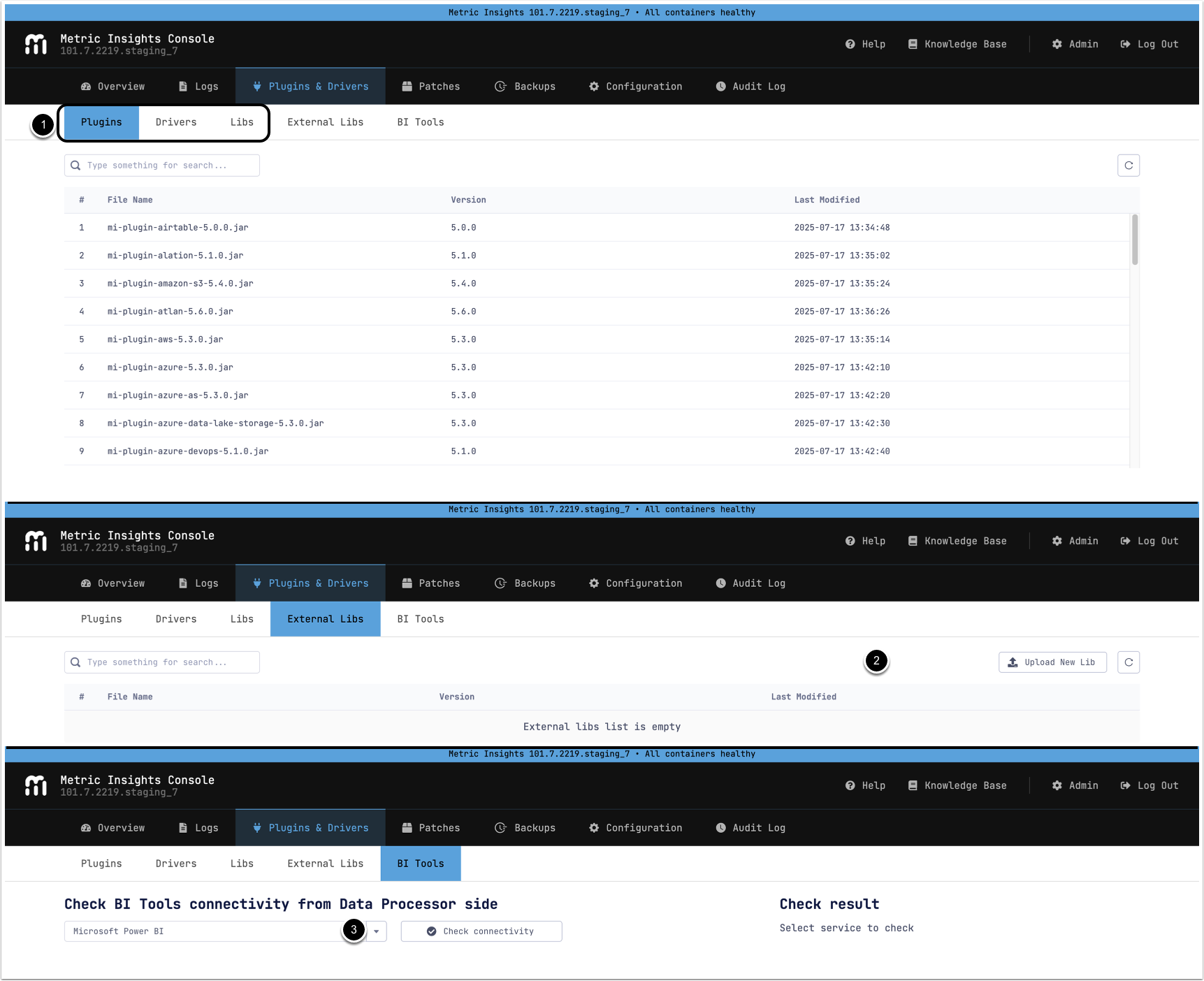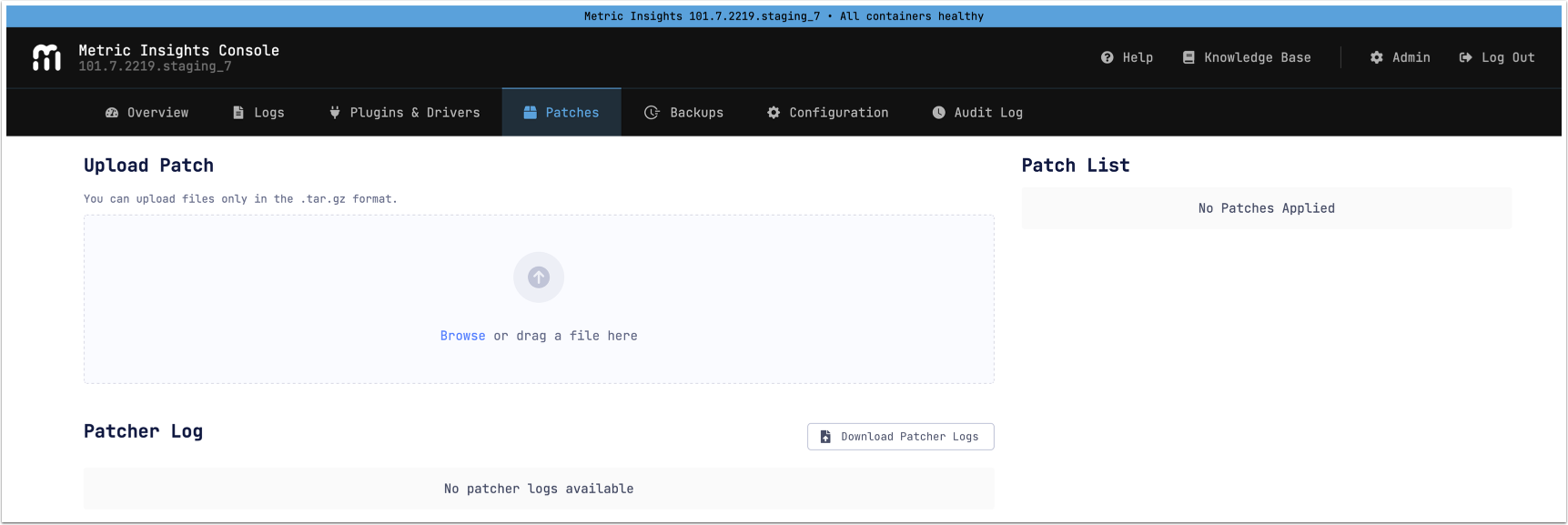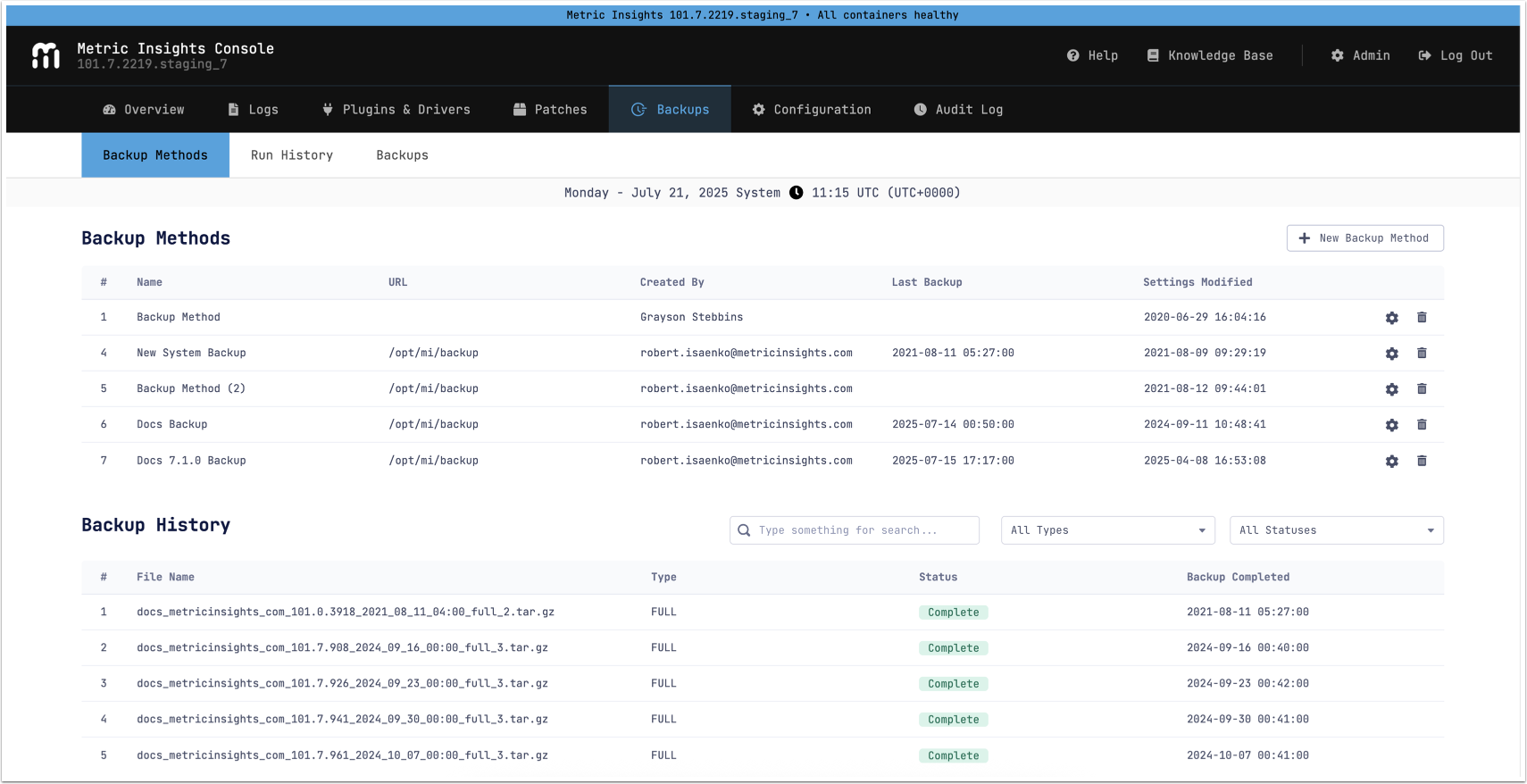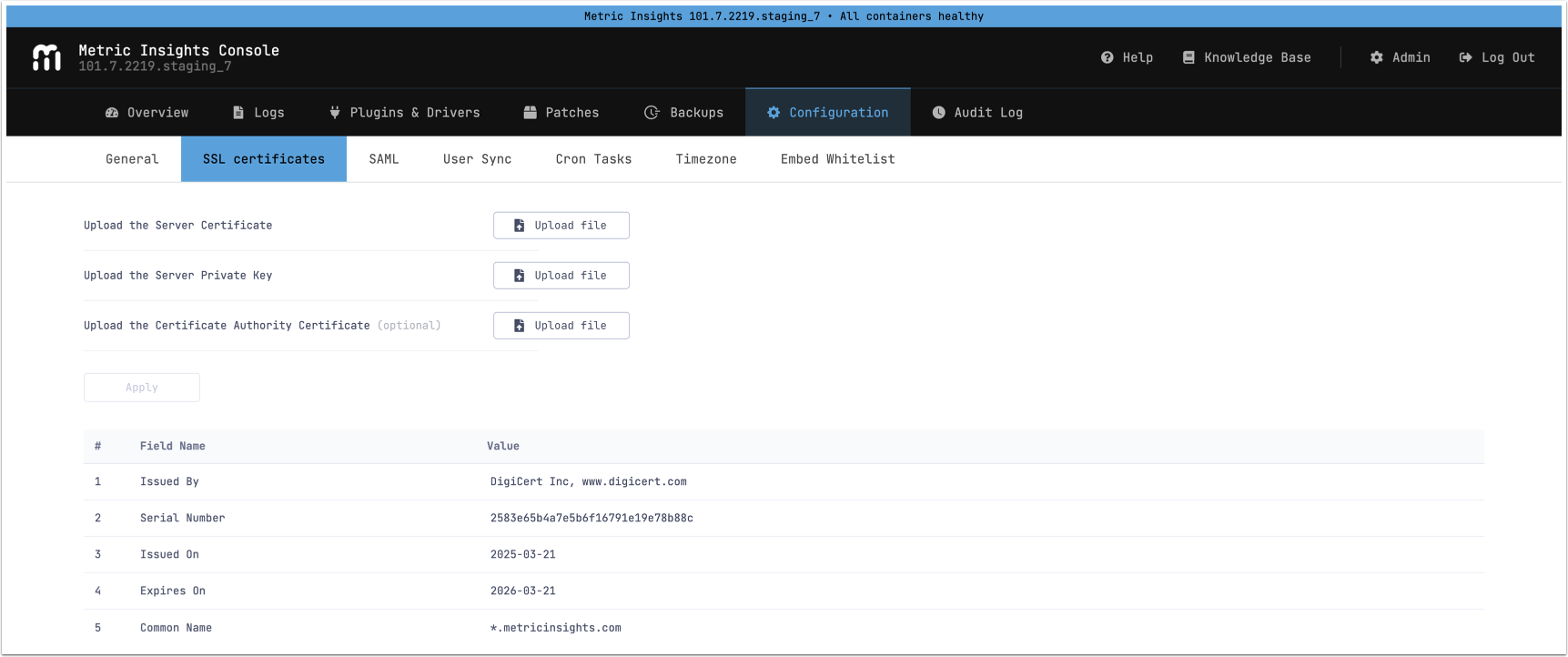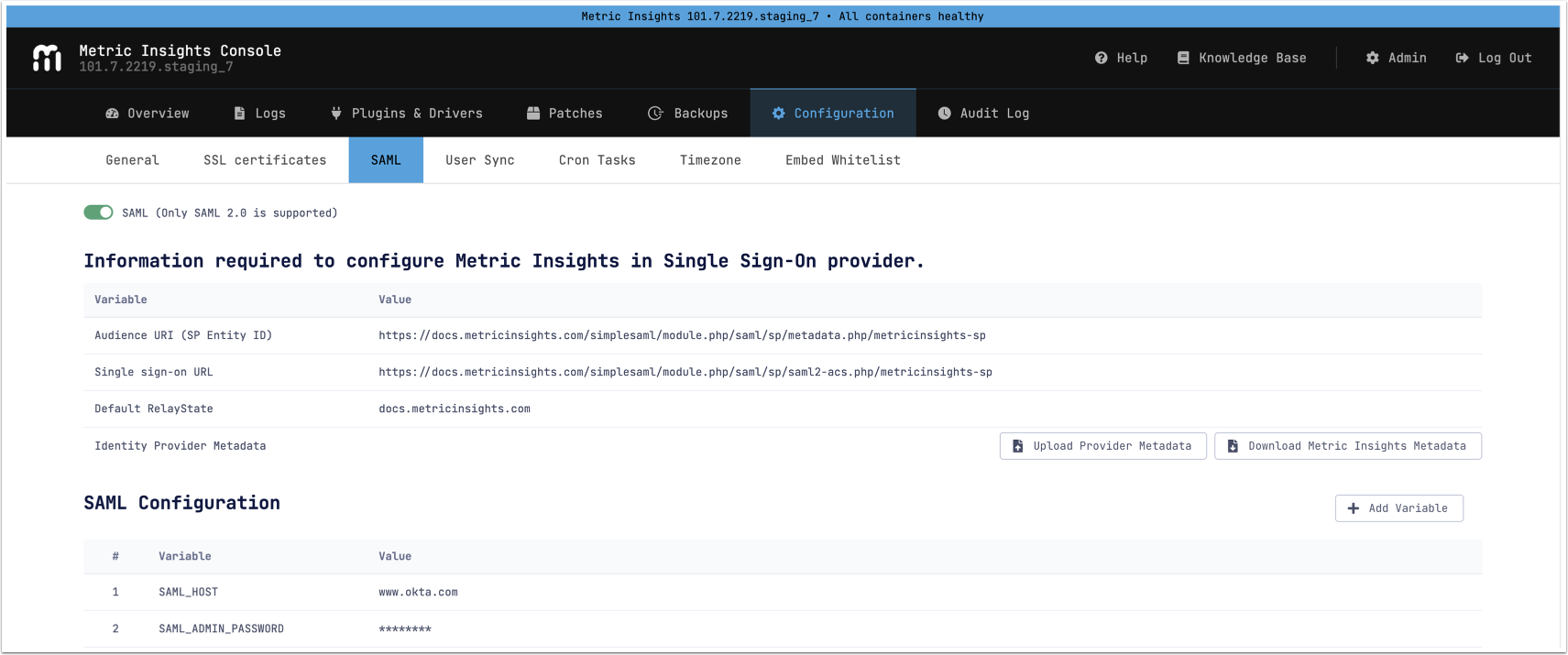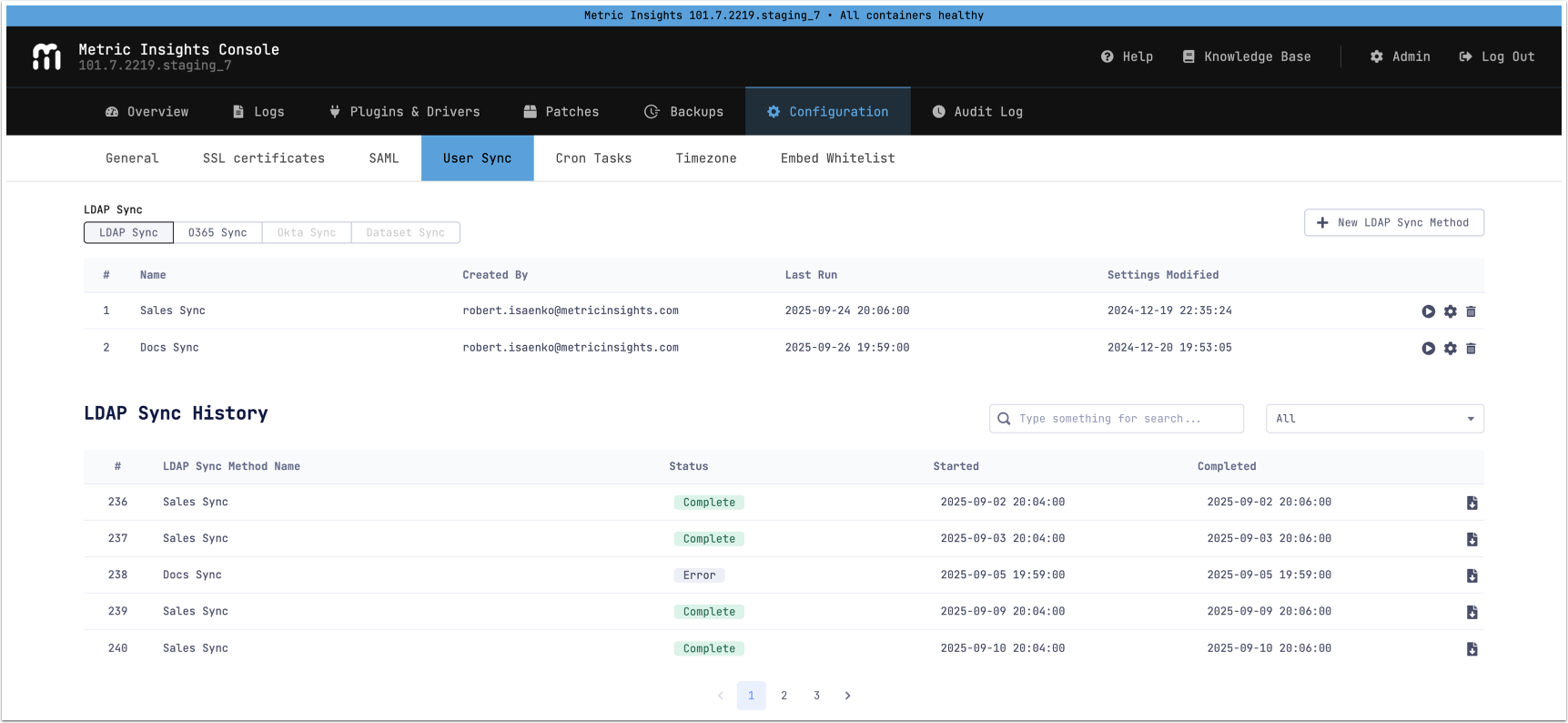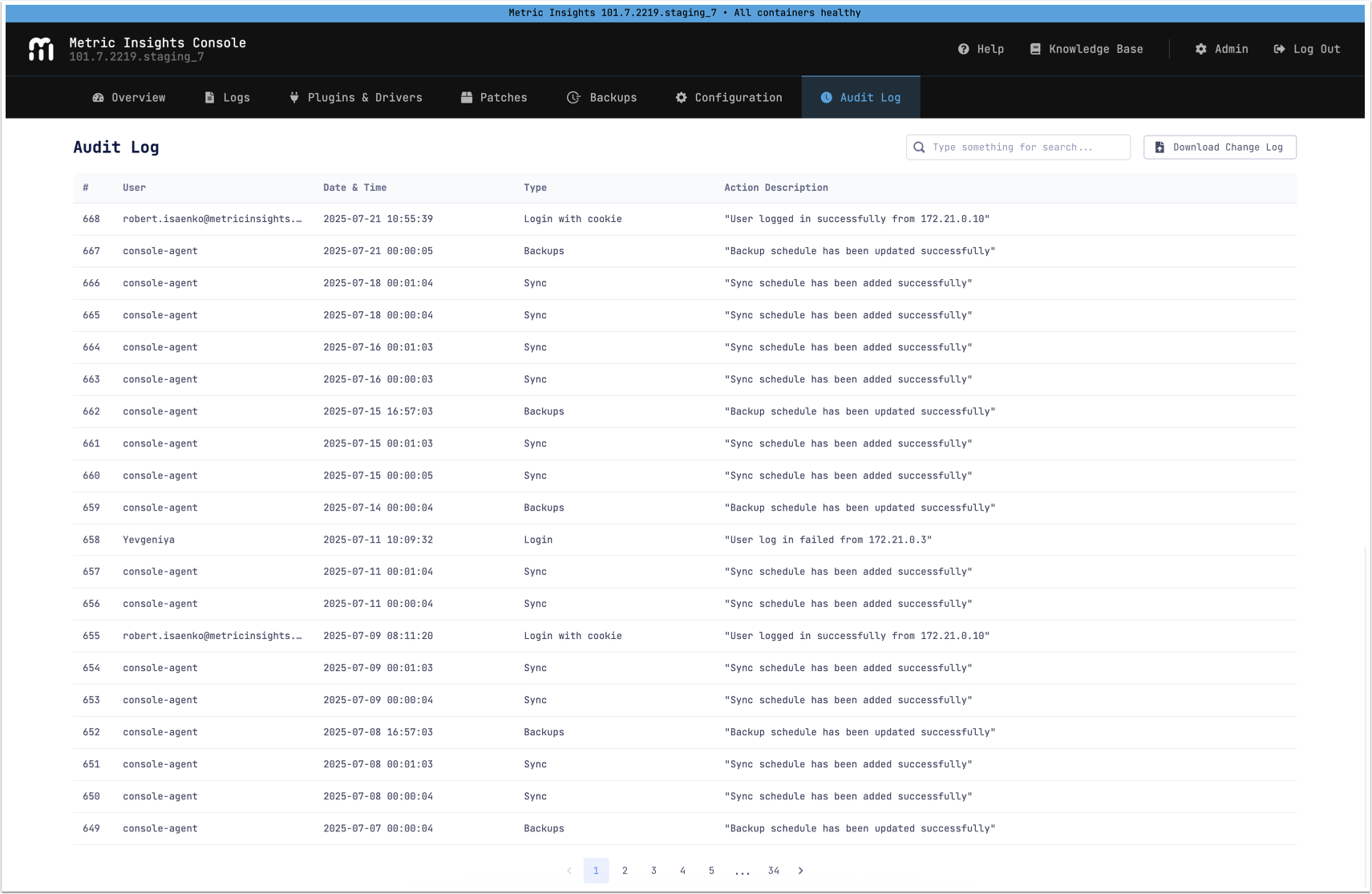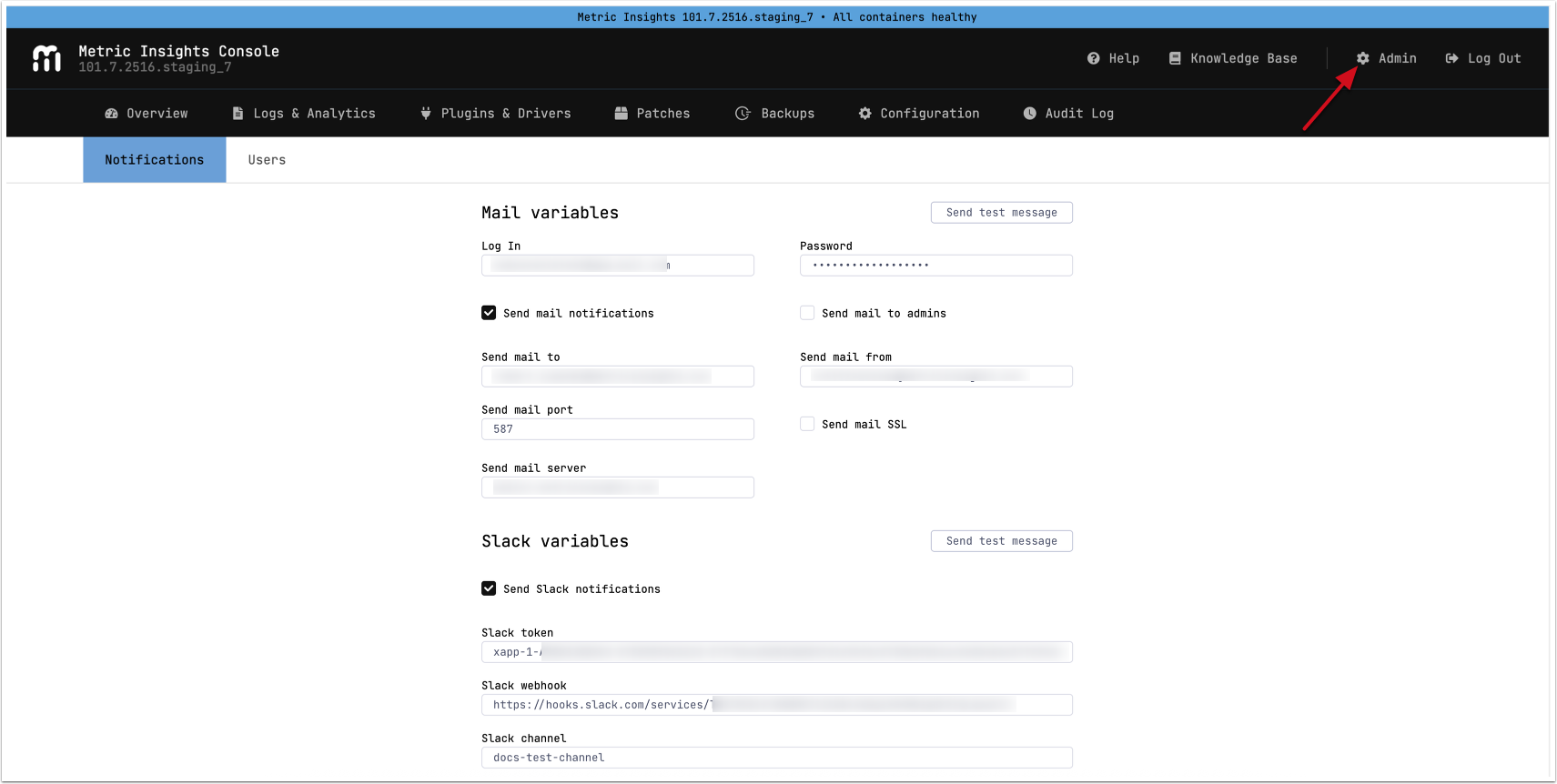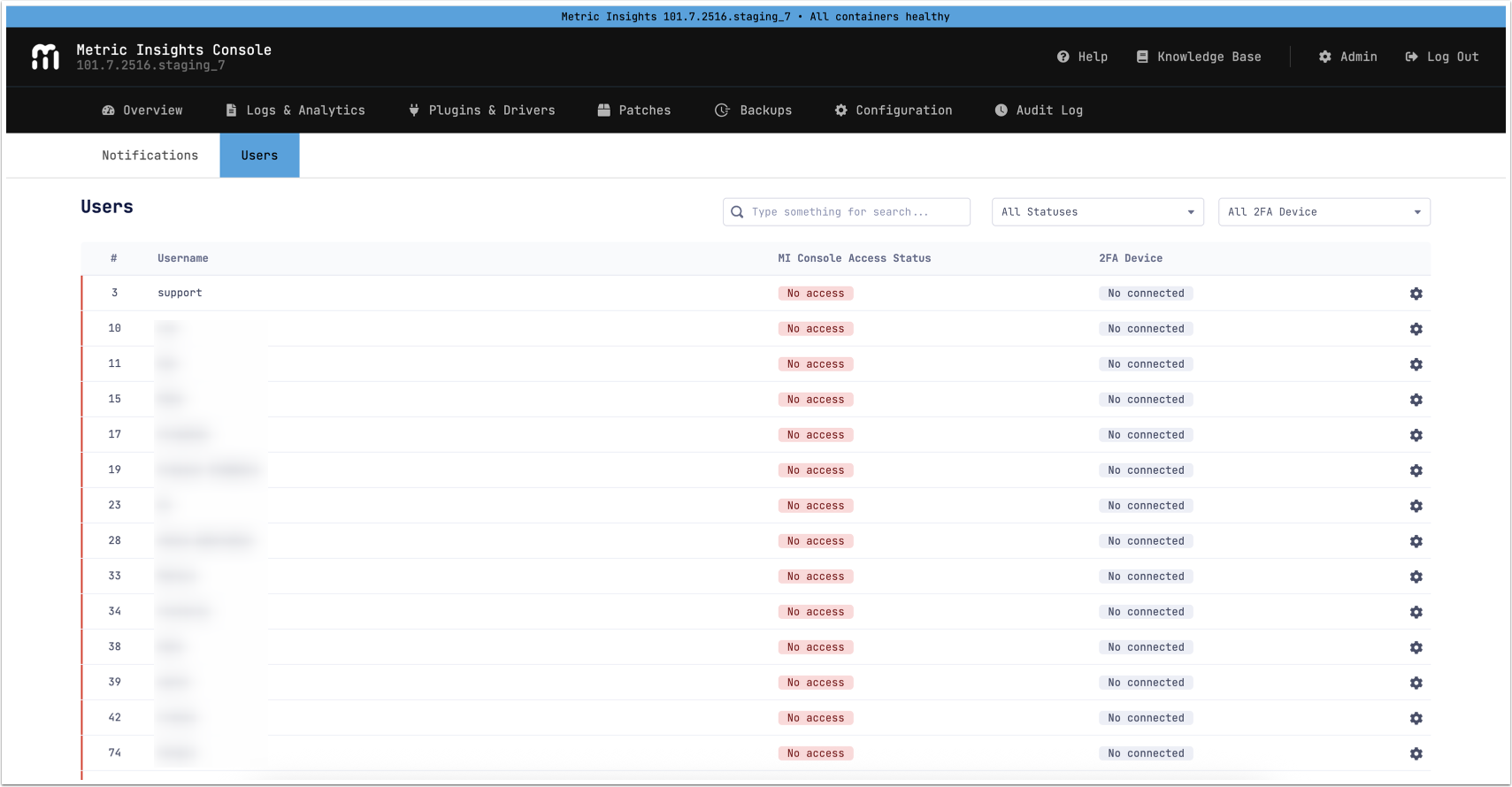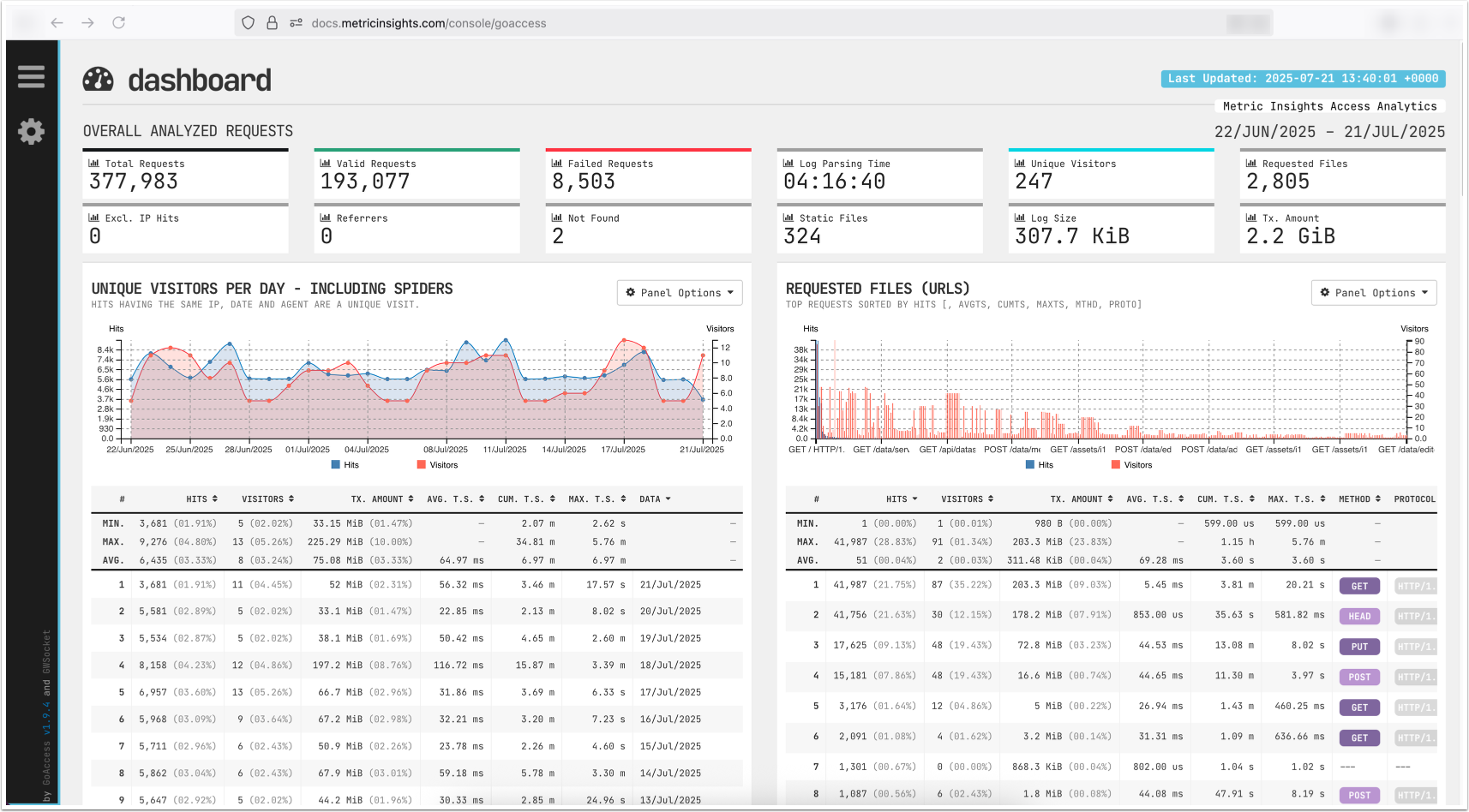Introduced in version 7.0.1, the MI Console is designed to bring most of the command-line functionality into a user-friendly interface, making it easier to administer the Metric Insights application. Key tasks, such as managing SSL certificates, authentication settings, user synchronization, and backups, can now be handled directly through the UI. Future updates will continue to expand these capabilities to ensure that nearly all administrative functions can be managed through the MI Console.
Table of contents:
Access MI Console
1. Grant Access to MI Console
NOTE:
- Beginning in v7.1.2, access to MI Console can be granted via MI Console's Admin Menu > Users tab.
- For Metric Insights versions prior to v7.1.2, access to MI Console can only be granted via the
mi-console-accesstool. - Only Admin users can be granted access to MI Console.
- Access the web container:
mi-web - Execute
mi-console-access allow <username>, providing a valid username.
You can also revoke a user's access to MI Console by executing the command: mi-console-access deny <username>.
2. Verify the Result
Access Admin > Users & Groups > User
If access has been granted, a note will be displayed indicating that the user has MI Console access.
3. Log In to MI Console
Access https://<MI hostname>/console/ or via Admin > Status Monitor > System Stats > MI Console link.
- Enter the credentials of the Admin user who has been granted access to the MI Console.
- [Sign In]
4. Authorize via 2FA
During your first login, you will be prompted to enable two-factor authentication (2FA):
- Scan the QR code using your authentication app (e.g., Google Authenticator).
- NOTE: 2FA is required for every action that changes the system's state or MI configuration. Information about these actions is stored in the Audit Log.
- Enter the validation code from your 2FA app.
- [Verify]
Overview
The Overview tab displays information about all MI application services, including:
- their status;
- RAM, CPU, and disk space usage;
- general information, as well as events related to those services.
Services
NOTE: A Seed node may still appear in the Services list, even after it no longer exists, if the system was upgraded from v6. This occurs because the system retains data on previously configured services, including obsolete entries.
- Click [+] to expand and view complete information about a service.
- The top pane displays general information about the service.
NOTE: The time displayed is based on the MI application's time zone.
- You can [Restart] the service from the UI.
- You can set the interval for the RAM and CPU graphs; the default value is 10 minutes.
- Disk Space Usage displays information about a volume's path, the volume's filesystem type, and details about disk usage.
Logs
NOTE: System Logs contain logs from opt/mi/log; Dataprocessor Logs contain logs from opt/mi/log/dataprocessor.
Available download options are:
- [Download All Logs],
- Select a log file from the list and [Download Selected Log].
Plugins & Drivers
- The first three tabs display information about the Plugins, Drivers, and Libs used by the MI application.
- You can upload External Libs on the corresponding tab.
- The last tab, BI Tools, can be used to ping BI tools' servers and ports to check connectivity.
Patches
On this tab, you can upload patches, view a list of the applied patches, and download Patcher logs.
Configuration
User Sync
NOTE: See the following articles for more details:
Cron Tasks
NOTE: The CRON command is not validated by the system; the user is responsible for its input.
- [+ Add Task]
- Fill in the cron task details. Hover over the information icon to see the accepted format and values for each field.
- [Save]
The Cron Tasks tab can be disabled by setting the environment variable DISABLE_CRON_UI to true within /opt/mi/config/deployment/credentials/console.env and redeploying the console container:
- Log in to the MI application host as the root user.
$ sudo -i- Navigate to the
/opt/mi/config/deployment/credentialsdirectory.
cd /opt/mi/config/deployment/credentials- Open
console.envand setDISABLE_CRON_UItotrue:
$ nano console.env
...
DISABLE_CRON_UI=true
...- Redeploy the console container:
$ mi-control rm --stop console
$ mi-control up -d consoleTimezone
After installing the MI application, you can change both the MI timezone and the MySQL timezone here. This functionality is equivalent to using the --timezone installer option. Information about timezone changes in Metric Insights is recorded in the audit.log file.
NOTES:
- Changing the timezone will restart the corresponding services.
- Changing the Metric Insights timezone specifically will restart all services, including the MI Console and Chatbot.
- Changing the MySQL timezone only affects the local MySQL instance.
Audit Log
This section lists all operations that require a 2FA code. A 2FA code is required for any action that changes the system's state or MI configuration. The operations listed here are permanently stored.
GoAccess
Beginning in v7.1.1, MI Console includes a built-in web service analytics dashboard powered by GoAccess. This allows administrators to monitor real-time user activity, traffic trends, and performance metrics without manual setup or external tools.
NOTE: See Access Web Service Analytics in MI Console (GoAccess Integration) for more details.
